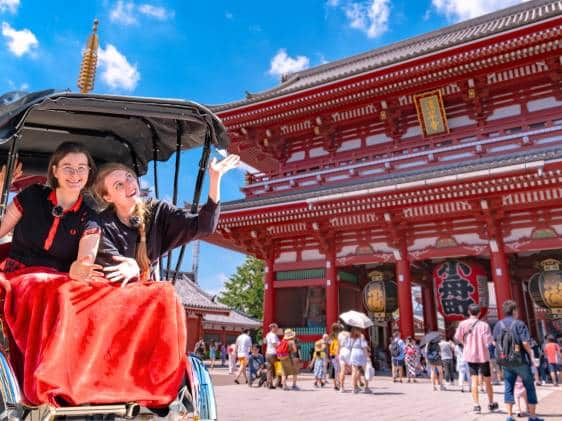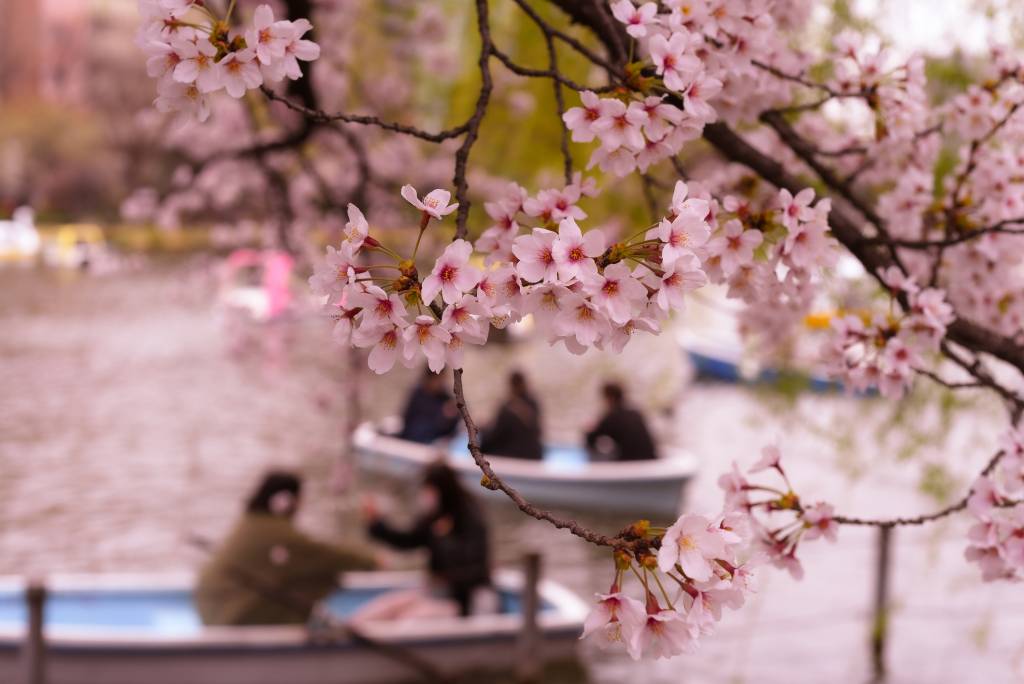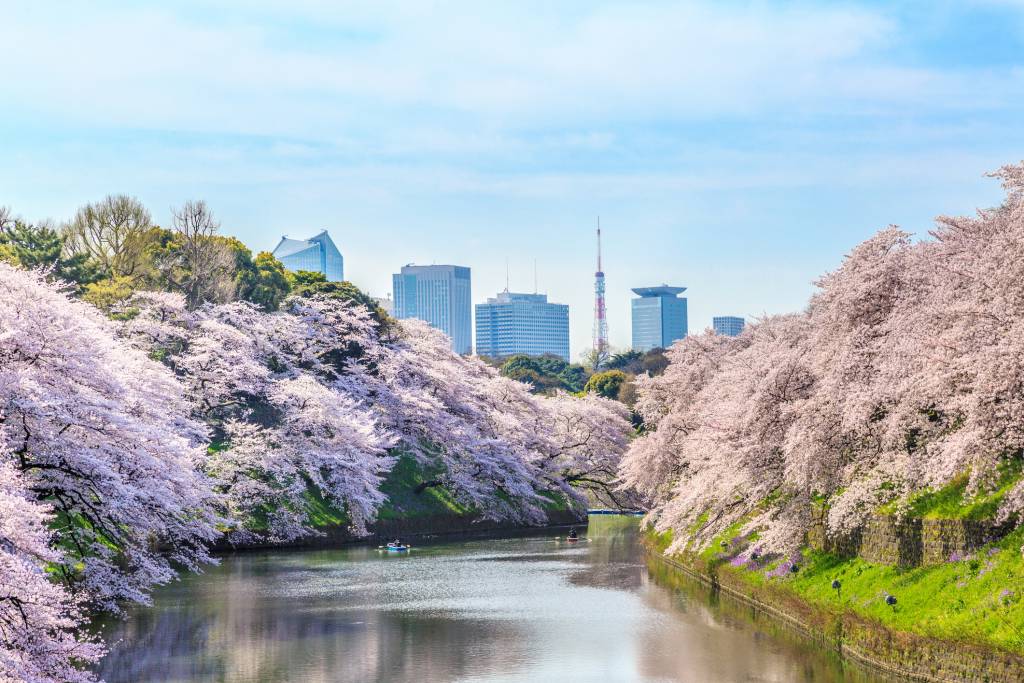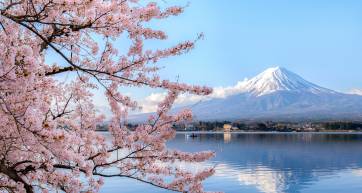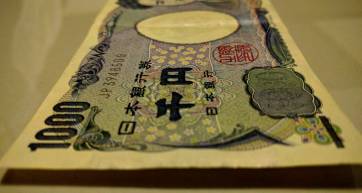Whether you’ve just arrived on a quest to see the best that Tokyo has to offer, or you’re a long termer on a mission to uncover hiden treasures, our list of 101 things to do in Tokyo has you covered.
Bonus: We also have lists for some of Tokyo’s more popular neighborhoods—Shinjuku, Akihabara, Shibuya, Harajuku, Roppongi, Asakusa, Ueno and Shimokitazawa.
Museums and galleries
- Experience the sensory overload of Planets by Japan interactive art installation prodigies teamLab. The museum was set to close in 2023, but has a reprieve until the end of 2027. Sister act teamLab Borderless is set to reopen at the start of 2024.
- Admire modern art, sculpture and installations at the Tokyo Metropolitan Teien Art Museum—housed within a rare pre-World War II art-deco mansion near Meguro. Admission to the garden is ¥200 for adults. Prices for the museum vary depending on the exhibition.

- Visit Meguro Parasitological Museum—proudly advertised as the world’s only parasite museum. Free admission, closed on Mondays. A 15-minute walk from Meguro Station.

- Marvel at both the amazing ukiyo-e that inspired Europe’s impressionists and the spectacular modern architecture of the Sumida Hokusai Museum, housing works by Japan’s 19th century ukiyo-e master Hokusai. Adults get in for ¥400.
- See pop-art exhibitions for free at the Diesel Art Gallery. Browsing the eye-watering prices of the clothes and accessories at Diesel is also free!

- Revisit your living-in-space fantasies (just me?) at Chofu Aerospace Center of JAXA—the Japan Aerospace and Exploration Agency. Includes a space shuttle simulator and lots of spacecraft and aeroplanes. Admission is free. Closed on Saturdays, Sundays and holidays. It’s a 13-minute bus trip + walk from Mitaka Station on the Chuo Line.
- Edo-Tokyo Open Air Architectural Museum.
Stroll from a traditional thatched farmhouse to a public bath house and pass by a stationery shop along the way; this branch of the Edo-Tokyo museum has it all. Mainly stocked from the Meiji-era, it hosts relocated and reconstructed buildings from across the country, offering a snapshot of Japan before true modernity hit. Admission is ¥400. It’s a 5-minute bus ride from Musashi-Koganei Station on the JR Chuo Line.

- Visit the Suginami Animation Museum—in the area where lots of Japan’s early anime industry was located. Free admission.

- Meet up-and-coming young artists at the Design Festa Gallery Space–artists and collectives rent out the rooms to run their own exhibitions
- Enjoy exhibits like “Let’s Enjoy Advanced Technology ‘Sewerage'” at the Rainbow Sewerage Museum in Odaiba. The closest station is Odaiba Kaihinkoen on the Yurikamome Line. Admission is free and it’s closed on Mondays.
- See the best of Japanese design at 21_21 Design Site next to Midtown, located between Akasaka and Roppongi. There is often a free exhibition on at the smaller of the two galleries.
- Like robots? You’ll love Miraikan! Full of science-y wonders for all ages to enjoy, what better place to interact with robots and AI? You’re sure to walk out with a wacky robot video and some new knowledge. Admission is ¥630, and the closest station is Fune-no-kagakukan

- Ponder why these two unrelated things are the focus of the Salt and Tobacco Museum in Oshiage. Admission is ¥100, and like most museums it’s closed on Mondays. It’s a 10-minute walk from Oshiage Station (under the Tokyo Skytree). It’s more interesting than it sounds!
- Take a wander through The National Art Center, Tokyo. There will likely be one or two free exhibitions. The non-free stuff is good too, but it can be pricey.

- Ōta Memorial Museum of Art is heaven for lovers of ancient Japanese paintings. It also helps that it’s in the center of Harajuku, so you can explore ukiyo-e and woodblock printing without going too far.
- Murakami Library – More literary-haven than library, this creative hub is home to the collected works of world-renowned author Haruki Murakami. Leaf through little-known and legendary texts, listen to his hand-picked jazz records and sip coffee in the student-run cafe of his alma mater – all for free.
Gardens and parks
- Take a walk in Hibiya Park. Look out for the turtles and herons in the ponds near the police box.
- Go on a tour of the Imperial Palace (apply using its “state-of-the-art” website).
- Yoyogi Park.Many parks in Tokyo will charge you for entry – but not this one! Which might be why it’s such a popular weekend hang out spot. Great for lowkey picnics, outdoor workout groups and the odd magic show. On the weekend and check out the event square in the summer and everywhere else for musicians, dancers and performers. Events include cultural festivals, live music, farmers markets and flea markets. More on Yoyogi Park here.
- Shinjuku Gyoen. Just another park? Absolutely not. At the heart of one of the city’s busiest districts, the green swathes of this former feudal lord’s residence offer French gardens, English lawns and Japanese landscapes against the pleasingly discordant backdrop of Tokyo’s skyline. Entry is ¥500, and the park is closed on Mondays. Closest station is Shinjuku Gyoenmae.
- Hama-rikyū Gardens takes the cake in a list of quaint Japanese gardens by including a picturesque teahouse and waterbus that takes you down the Sumida River.
- Tokyo has a few ponds and lakelets to choose from, but Senzokuike Pond in the eponymous park is our pick. It’s larger than the ones in Inokashira and Ueno Parks and it has a cute island shrine accessible by bridge. Autumn leaves are a highlight.



- Pretend you’re a guest at the Hotel New Otani and explore the beautiful garden, which predates the hotel by about 200 years (there are no checks and there are always hundreds of people wandering around).
- Do the same at the garden at Chinzanso. It’s the same deal as with the New Otani—there are always events here so no one bats an eyelid or particularly cares if you’re a guest or not. The garden is gorgeous.
- Take your SO for a walk in the park at Koishikawa Korakuen. Entry is ¥300. It’s a relaxed 10-minute walk from Iidabashi Station.
- Not to be confused with the place above is Koishikawa Botanical Gardens. Admission is ¥500, and the gardens are closed each Monday. Closest station is Hakusan on the Mita Line.
- One of the largest parks in Tokyo, Showa Kinen Park in Tachikawa makes for a fun day out for the whole family with a water park, natural attractions, picnic areas, BBQ area, fake Mayan tower and strange massive dome-shaped bouncy castle thing. Entrance: ¥450 (adults), ¥210 (senior), free for kids.


- Take the world’s shortest and smallest monorail from Oji Station to Asukayama Park—one of Japan’s first public parks and the site of a number of museums.
- See a tycoon’s Western-style residence built during the Meiji period as well as an English and Japanese gardens at Kyu Furukawa Teien. It’s a short walk from Kami-Nakazato Station on the Keihin-Tohoku Line. Admission is ¥150.

- Wander around Higo Hosokawa Garden—the former gardens of a feudal lord during the Edo period. Admission is free. You can walk there from either Waseda or Edogawabashi Station.
- Enjoying the flowers and tranquility of Mukōjima-Hyakkaen Garden is one of the most peaceful things you can do in Tokyo. This garden was built by a rich merchant during the Edo period in northeast Tokyo. Admission is ¥150, and the garden can be reached on foot in 8 minutes from Higashi-Mukojima Station on the Tobu Isezaki Line.
- Located 300 m to the north of Ryogoku Station on the Sobu Main Line, Kyu Yasuda Teien is another garden dating from the Edo period.

Taking a ride
- Get on the circular Yamanote Line and go all the way round (get off one stop away from where you got on, thereby paying the minimum fare).
- For one of the best views of Tokyo Bay, the skyscrapers that surround it and Tokyo’s iconic Rainbow Bridge, jump on the Yurikamome automated light rail system. The line begins in Shinbashi, goes across the Rainbow Bridge itself and does a big loop around Odaiba—the land of huge bubble-era construction follies—before pulling into Toyosu Station.
- Hop on the Hop-on Hop-off Sightseeing Bus. While a sightseeing bus is quite conventional, the open-top bus is a great way to get a feel for an area before going back later to explore some more.

- Looked upon by locals as either terrifyingly dangerous, a nuisance, or both, the street go-kart tours around Tokyo continue to be hugely popular with visitors. Make sure to bring an international driver’s permit!
- If leaping head first into tourist traps is your thing, take a rickshaw tour of Asakusa. A large part of the appeal is the strapping lad or lass in tight shorts pulling the rickshaw. You can either book online, or head to Kaminarimon and choose your preferred driver.
- Take one of Tokyo’s last remaining tram/street car lines—the Toden Arakawa Line (also called the Tokyo Sakura Tram)—from the start at Minowabashi through to the terminus at Waseda. Only ¥170 for the entire 50-minute trip.

Fun, games, and entertainment
- Take a stroll around Asakusa in a stylish kimono. There are plenty of kimono rental services that will dress you up correctly and even take photos.
- Have a laugh with purikura, a unique Japanese photo booth/sticker experience. Spend around ¥500 to snap a photo with friends and giggle as you edit the big-eyed, alien-like results.
- Go to Ghibli Museum — a must visit for Studio Ghibli fans! The exhibitions will delight you, the vibe will make you feel like you’re in a movie, and the robot on the roof is great for photo ops. Be sure to get your tickets in advance.

- Nonbei Yokocho—check out some old-fashioned miniature bars in Shibuya. Other places for that yokocho experience are Sankaku Chitai in Sangenjaya, Sanchoku Yokocho in Yurakucho, Ebisu Yokocho, Bourbon Road in Kamata, or Omoide Yokocho in Shinjuku.
- Have a bath at an old-school Japanese-style sento at Shimizu-yu in Omotesando or Jakotsu-yu in Asakusa.
- Head down to the basement of Matsuya department store in Ginza at lunch time to try lots of free food samples.

- Check out the street perfomers. Common busking spots in Tokyo include: Shinjuku Station, Yoyogi Park, Ueno Park, and Inokashira Park.
- If you’re lucky enough to be in Tokyo during one of the three major tournaments each year grab some tickets for the sumo. If your stay doesn’t coincide with a tournament, watch a morning sumo training session instead.

- Attend a baseball game at Jingu Stadium — home ground of the Yakult Swallows and the historic home to baseball in Tokyo.
- Cheer on the good guys and boo the heels (or vice versa) at a Pro Wrestling event.
- Rent a bike and cruise around the city. You’re better off avoiding some of the more crowded areas like Shibuya, Shinjuku, Akihabara, and Ikebukuro, but Asakusa, Ueno, Oji, Suidobashi, Setagaya (especially some of the new cycle ways around Shimokitazawa), and around the Imperial Palace are nice places to ride.
- Daytime karaoke is one of the most fun and memorable things to do in Tokyo. Day time is also when you get the best rates.
- Spend a few 100 yen coins at a vintage games arcade, like Mikado next to Takadanobaba Station.

- Morning jog round the Imperial Palace. The forest surrounded by a moat slap bang in the center of Tokyo is a popular route for morning joggers. Get off at subway station Sakurada-mon, between 7 am and 9 am, and just follow all the other joggers.
- Climb to the summit of Hakoneyama in Toyama Park—Tokyo’s tallest central city “mountain”. It’s more of a novelty though, since the 44.6-meter-high peak doesn’t even afford views over the surrounding trees! To go on a quest to climb all of Tokyo’s central city “mountains”, take a look at the places on our tongue-in-cheek list.
- For (an only slightly) more challening hike, head to Mount Takao. When climbing Mount Takao, make sure you take the Keio Line from Shinjuku—at ¥390—it’s about half the price of taking the JR Line! Takao can get a little crowded and sometimes feel a bit touristy in the Spring and Autumn. You can also try one of these 10 Tokyo hikes, with options for beginners, enthusiasts and experts. For a serious mountain hike, try the Okutama-Mitake-Hinode trail.
Showrooms and shopping
- Play with some of the cleverest toys you’ve ever seen at Hakuhinkan Toy Park on Chuo Dori.

- Find a book bargain in atmospheric Jimbōchō Book Town. There are plenty of English and Japanese second-hand titles to browse through, and even if you aren’t a reader, it’s worth a trip just for the photos.
- Ever wondered where the cool kids of Tokyo get their clothes? Usually in quirky second-hand stores in Kōenji, Shimokitazawa, or Harajuku. People often debate which is better, but we tend to prefer the atmosphere of Kōenji/Shimokitazawa.
- Ameya-yokochō. This place used to be a black market for American goods but now is an eclectic market where you can get a pair of Adidas sneakers, perfume and a fresh fish, or anything else you can dream of.

- Musashi Koyama Palm is the longest covered arcade in Tokyo. Known as shōtengai in Japanese, this is what shopping in Japan looked like before the arrival of malls and megamarts. Look out for the small mom-and-pop stores sprinkled among the chains. Palm also has every “Off” store including “Liquor Off” (don’t say that out loud).
- Akihabara has more than it’s fair share of computer goods, electronics, gadgets, and collectibles.
- Akihabara is also host to a seven-story sex superstore called M’s. Go and explore what Japanese technology innovation has done for this industry.
- Much loved in the Tokyo otaku community — some say more than Akihabara — Nakano Broadway is filled to the brim with old and new anime and manga memorabilia, including figurines, games, posters, and more.

- Parade along Omotesando and check out the super-expensive brands stuff at places like Omotesando Hills and get a cuteness overload at Kiddy Land.
- After getting bored of Omotesando, wander down the unique and impossibly crowded Takeshita Dori in Harajuku. A test-centre for street fashion, Takeshita-dori is the unrivalled home of eccentricity in Tokyo. Full of independent and big-name niche-style stores as well as sweets and snacks galore, it’s a sensory overload in the best possible way.
- A street so (un)fortunately uncool it escaped Tokyo’s generic upgrade phase, Yanaka Ginza is now blessed with a blend of quirky independent shops and traditional crafts. Stop for steamed manju bun or a cat-shaped taiyaki as you browse before exploring the neighborhood’s winding backstreets and tree-lined cemetery.
- Kappabashi Kitchenware Town – the go-to place for certified chefs, DIY-dabblers and the culinary curious, this food-based shopping street is like no other. As well as being home to the plastic-fantastic foodwares we know and love, it has every utensil, tool and trapping you could ever need, plus some of the best bladesmiths in the city.
- Feel like you’re violating some sacred inner sanctum of gyaru culture by exploring the 109 department store in Shibuya. Bonus points if you get some of the shop staff to pose in a photo with you.

Public art and architecture

- Check out some of renowned artist Taro Okamoto‘s various public art works. The most famous are the totems at Sukiyabashi Crossing in Ginza and outside the Children’s Castle (next to the UN University) in Aoyama, as well as the mural in Shibuya Station. His house in Aoyama is a museum—the best stuff can be seen from the street for free.
- Cower before the Gundam Statue in Odaiba (also #9 in this article) and catch a Unicorn Gundam show. This show happens several times a day and is totally free – so even if you’re not a fan you’ve got nothing to lose.

- Hunt out the remaining modernist architectural gems that Tokyo has to offer. There is still a structure by Le Corbusier (in Ueno Park) and two buildings by Frank Lloyd Wright—go find them!
- Wander around Ginza/Yurakucho to see structures by some of the most celebrated current crop of architects. Look for the translucent Hermès Building by Renzo Piano, the Mikimoto building by Toyo Ito and the Tokyo International Forum by Rafael Viñoly.

- Traverse Omotesando starting with the Nezu Museum—a beautiful reinterpretation of a Japanese warehouse by Kengo Kuma, continue on to the stunning Prada Building by Herzog & de Meuron, then look for the TOD’S Building opposite the Apple Store—another Toyo Ito masterpiece. Other buildings along this street include structures by Tadao Ando, MVRDV and SANAA and finish at the kaleidoscopic entranceway ofTokyu Plaza Omotesando Harajuku. Check our half day itinerary for more.

- Nishi-Shinjuku Skyscraper District. Supposedly the visual inspiration for the futuristic urban landscape of Ridley Scott’s Bladerunner, Nishi Shinjuku is home to a whimsical collection of skyscrapers. Look for the Park Hyatt, Mode Gakuen Coccoon Tower and the Sonpo Japan Building. Go to the Tokyo Metropolitan Government Building or the Keio Department Store rooftop for the best view.
- Shibamata is dedicated to Tora-san – a TV character beloved by anyone in Japan over the age of 60. The theme tune from the TV drama that epitomized the Shōwa period (spanning the mid 20s until 1989) plays on loop along the main street, which leads to the beautiful Shibamata Taishakuten temple and the serene Suikeien garden.
Historical places
- Pay homage to the resting place of the 47 Ronin at Senkakuji Temple.

- A loyal hound, a sudden death and a slice of Tokyo history; Hachiko is what all statues should be made of. Comissioned to commemorate the beloved Akita dog who waited patiently for his owner’s return from work, despite his untimely death, the statue is a much-loved meeting point at the city’s busiest crossing.
- Hop over to Otemachi and wander into the East Gardens of the Imperial Palace (open to the public) and make your way to the top of the ruins of the Edo Castle dojon (castle platform). Even though the castle burned down not long after it was built 400 years ago, the height of the base is still quite impressive and gives a nice view of the area and the surrounding city.
Hangouts
- Buy a bento from Precce or 7-Eleven and eat it on the terrace behind Tokyo Midtown. The restaurants just next door charge more than your whole meal just for a drink.
- Get a coffee at Starbucks and watch the madness of the scramble crossing in Shibuya.

- Explore the seedy backstreets of Kabukicho after dark looking out for the not-so-elusive, impossibly svelte hosts. You can usually find the more junior ones with permanent scowls painted on their faces loitering around the entrances of their establishments. Check out the sign boards outside featuring their names, blood types and “talents”.
- Hunt for Tokyo’s surprisingly elusive Godzilla statues. There’s one in Hibiya and another in Kabukicho. For more of the ornery lizard, check our guide for places to see Godzilla.

- Explore “Love Hotel Hill” in Maruyamacho between Shibuya Station and Yoyogi Park.
- Drop ¥500 on pachinko, or at least wander through a pachinko parlor and see how long you can stay in there without running out screaming.

- Head over to Akihabara and have a strawberry milkshake at a maid cafe. The maids are interesting enough, but observing your fellow patrons is almost as much fun. Fair warning, they’ll probably want to charge for taking photos (the maids that is, not the patrons).
Views of Tokyo
- Hijiri-bashi, Ochanomizu – this iconic bridge connecting Ochanomizu with Akihabara is a trainspotter’s wet dream. If you time it just right, you can capture a bright red Marunouchi Line train emerging from it’s subterranean hiding place with Chūō Line trains running through Ochanomizu Station just above.

- The highest free observation deck in Tokyo is at the Tokyo Metropolitan Government Building—near the West Exit of Shinjuku Station.
- Another free observation point is Bunkyo Civic Center‘s Observation Desk on the 25th floor.
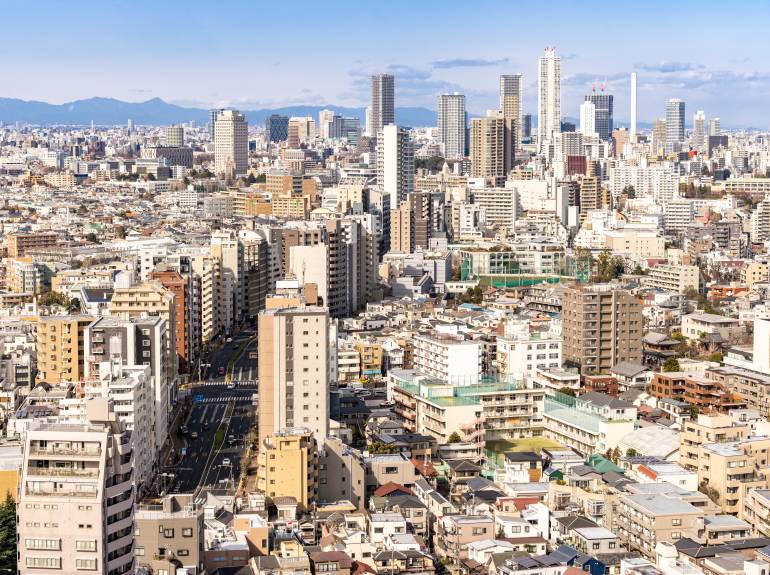
Temples and shrines

- Gōtokuji is famous for its lucky cats (check out this article for the full backstory) that are dotted throughout the temple grounds – the cute factor makes for great photos.
- Ueno Tosho-gū – A shrine dedicated to three different Tokugawa shōguns, this shintō shrine in the middle of Ueno Park was built for the nobility and designed to impress. No muted brown tones for the Tokugawa clan, how about just coating the whole thing in gold?
- Atago-jinja – Few shrines are so romantic yet so dangerous at the same time. The notable feature of this shrine are the vertigo-inducing stairs. If you survive the climb to the top, you will be blessed with good luck.
- Sensoji—hugely popular with tourists, but for good reason. For a view of the temple, the Kaminarimon gate, and the Nakamise-dori shopping street that leads to the temple, take the stairs to the top level of the Kengo Kuma–designed Asakusa Culture and Tourism Center

- Get one of those photos where you juxtapose Zojoji in the foreground with the nearby Tokyo Tower. Closest station is Shibakoen on the Mita Line.
- A quiet escape in busy Harajuku, Meiji Jingu is dedicated to Emperor Meiji and his love of Western and Japanese culture. Sake barrels stand beside French wine, cedar trees donated from around the world provide a resting place for the royal souls and visitors can explore the grounds, spotting a wedding or two along the way.
- Visit Ikegami Honmonji—the resting place of Nichiren—one of Japan’s great Buddhist teachers. The temple is a short walk from Ikegami and Nishi-Magome Stations.

- Take the escalator to enlightenment at Hie Shrine in Akasaka. Make sure you take the rear exit down the tunnel of vermillion torii gates. Closest stations are Akasaka and Tameike Sanno.

- Enjoy the gardens (best in Spring and early Summer) at Nezu Shrine. The shrine is a 10-minute walk from Nezu Station on the Chiyoda Line.
And for anyone with a London trip on the horizon, check our 101 free things to do in London on our sister site, London Cheapo.
This article was originally published in December 2012 and is updated periodically. Last update: June 2023. If you enjoyed this post, be sure to check out the rest of our website. We’re dedicated to making your time in Tokyo the best it can possibly be.



